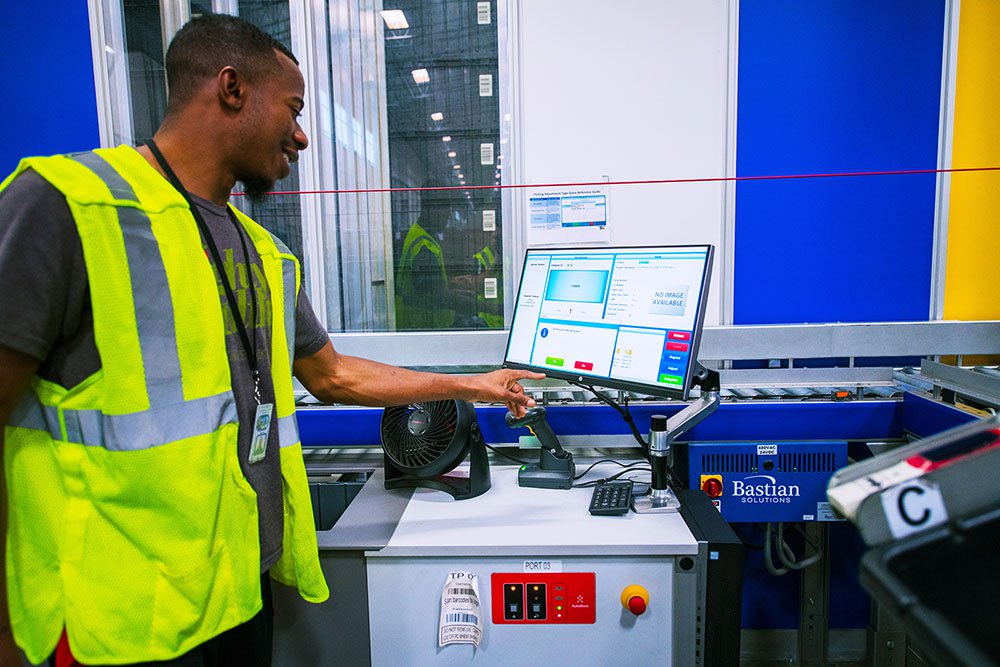
The Value of Intralogistics Software in Effective Material Handling
John Young | 15 February 2023
Material handling is a very exciting industry to be a part of in 2023. The demand for fast, efficient and reliable storage and fulfillment is higher than ever, which has led to some amazing advancements in technology. Goods to person systems, robotics, automated trailer loading, and automated vehicles are just a few of the amazing technologies that everyone in the industry is talking about. These solutions can add incredible value to a distribution center, but there is a critical piece behind the scenes that can make or break the entire system: software.
Software’s Impact with Warehouse Automation
The software behind warehouse automation technology directly affects the speed, efficiency and reliability of the system. The optimization of all three keeps operational costs down and lead times low for businesses, while maintaining quick deliveries on expanding product selections for customers.
Speed and Structure
No matter how quickly a system’s hardware can theoretically operate, its speed is ultimately determined by the software’s ability to send and receive messages and commands. To get the best ROI out of a technology, the software needs to have a database structure that is optimized for the system’s size and throughput, so it is neither bogged down by too much data, nor too costly due to oversizing.
Efficient Communication
The interfaces between material handling equipment and host system should also be designed to communicate necessary data in the most efficient way possible, as some systems are incredibly sensitive to the automation’s idle time when it comes to throughput.
This is where a scalable and vendor agnostic WES (warehouse execution system) comes into play. The main purpose of WES software is to be the primary interface between the host system and the various islands of automation technology. Through this connection, users have visibility to the entire system and can make adjustments to optimize distribution operations.
Achieving Reliability
A system’s software is also vital in ensuring that it can operate as efficiently as possible. Any wasted movement or storage space by an automation system is wasted energy and time, which directly affects ROI and client satisfaction. A good software solution should be able to determine how to minimize empty storage space and distance travelled by automation components to maximize storage, energy, and time efficiency.
Speed and efficiency mean very little if the system is unreliable. If customers consistently receive incorrect orders or if the system experiences bugs that cause downtime. A well-designed software solution will contain features that ensure orders with critical issues do not make it out the door, like operator alerts and troubleshooting utilities, as well as built-in redundancies that keep the system up and running as much as possible.
Flexible and Seamless
One last aspect to an impactful software solution, thus a high-performing material handling system, is extensibility. Extensibility is the measure of the scalability and integrability of a product or system.
As the world’s economy and supply chain changes, companies need to be able to adapt alongside them. Having software that is compatible or “plays well with others” enables better communication of information. Modular applications that can be easily integrated support growing business requirements. Flexible and seamlessly integrated software can help prevent system stagnation and hedge against the uncertain demands of the future.
Maximize Your Warehouse with Software
A solid software solution is imperative to any warehouse’s operations, and can have a huge impact on your ROI, customer satisfaction, and bottom line. Leveraging years of experience designing and integrating systems of all sizes and scopes, Bastian Solutions engineers can provide software and automation recommendations that fit your specific needs.
John is a Logistics Consultant at Bastian Solutions’ software division based in Louisville, Kentucky. He received his B.S. in Mechanical Engineering and M.S. in Business Administration from the University of Kentucky. John works to design software for highly automated systems including those with goods-to-person technology, conveyor routing, sortation, and more.
Comments
No comments have been posted to this Blog Post
Leave a Reply
Your email address will not be published.
Comment
Thank you for your comment.